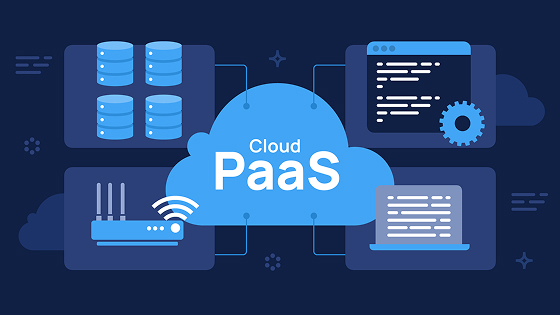
Platform as a service is a cloud computing model used when building software. It simplifies the deployment process and helps developers focus on the essential details, produce high-caliber code, and provide memorable user experiences with high-quality products.
What is Platform as a Service (PaaS)?
PaaS provides developers access to a fully complete cloud environment for not only development but also deployment.
With PaaS, teams can build, test, deploy, manage, and upgrade their applications without needing to consider the underlying infrastructure.
Pst, did you know – PaaS is the in-between layer of Infrastructure as a Service and [Software as a Service](https://azure.microsoft.com/en-in/resources/cloud-computing-dictionary/what-is-saas#:~:text=Software%20as%20a%20service%20(SaaS,from%20a%20cloud%20service%20provider.).
What does PaaS include?
A typical PaaS solution offering includes:
- DevOps tools like CI/CD pipelines and tools for monitoring and testing.
- Hosting environment with features like auto-scaling, load balancing, and runtime environments.
- Prebuilt API and services that can be used for authentication, notifications, payments, and much more.
- Tools and libraries for building applications like frameworks.
- Database services for SQL and NoSQL databases.
Why use PaaS?
1. Speed and agility
Developers can go from idea to deployment in record time. PaaS handles provisioning, patching, and infrastructure so teams can focus on coding.
2. Simplified management
No more configuring VMs, managing OS updates, or dealing with runtime installations. Everything is taken care of.
3. Scalability
PaaS solutions can scale applications automatically based on traffic, ensuring performance without manual intervention.
4. Cost-effective
You only pay for what you use, avoiding the overhead of hiring infrastructure specialists or buying hardware.
5. Developer productivity
With built-in development tools, testing environments, and debugging options, PaaS enhances team collaboration and output.
When should you use PaaS?
PaaS is ideal for:
- Developers who are starting the implementation of a new web or mobile application.
- Team members who want to speed up development and improve efficiency without managing infrastructure.
- Collaborative team environments with multiple developers.
- Developers who want to integrate with cloud-native services (e.g., AI, analytics, storage).
- Anyone working on projects with uncertain or variable traffic patterns.
Challenges to keep in mind
While PaaS offers many benefits, it’s not without challenges:
- Vendor lock-in: Switching providers might be difficult.
- Limited control: Low-level setups may not be modifiable.
- Security and compliance: Regarding infrastructure-level security, you are dependent on the provider.
PaaS and the future of cloud computing
As technology evolves, Platform as a Service (PaaS) is set to play an even more influential role in the future of cloud computing. Here’s why:
1. Greater emphasis on developer experience
PaaS platforms emphasize user-friendliness, smooth integrations, and user-friendly developer tools. This helps reduce the time to market, enhances collaboration, and speeds up prototyping of an application.
2. AI and machine learning integration
AI/ML capabilities are progressively being integrated into contemporary PaaS products. Without extensive artificial intelligence knowledge, developers can use prebuilt models, APIs, and services for image identification, natural language processing, forecasts, and more.
3. Rise of microservices and containers
Building scalable, modular, and resilient programs is becoming simpler with PaaS’s expanding support for microservices architectures and containerized apps. Anticipate a more thorough integration with container orchestration technologies, including Kubernetes.
4. Edge and serverless computing
PaaS is growing to accommodate edge and serverless installations. Developers can improve performance and reduce the delay by deploying apps closer to users, particularly for real-time updates, AR/VR, and Internet of Things applications.
5. Enhanced security and compliance features
Future PaaS platforms will have zero-trust designs, sophisticated security automation, and more integrated compliance capabilities to help businesses stay safe and audit-ready as security and regulatory requirements increase.
6. No-code/low-code synergy
To bridge the gap between IT and business, PaaS will continue integrating with low-code and no-code platforms, allowing business users and citizen developers to participate directly in app development.
7. Smarter automation and DevOps
PaaS systems are all automating code deployment, monitoring, and incident response. Future developments will result in DevOps processes powered by AI and ever more intelligent CI/CD pipelines.
Concluding thoughts
PaaS helps reduce the complexities of managing an application infrastructure while allowing developers to focus on building great software in the allocated time.
Whether you are in the phase of launching your first-ever product as a startup or an enterprise scaling new solutions with established products, PaaS can be the launchpad that accelerates your innovation.
I hope you found this helpful.
Thank you for reading.
